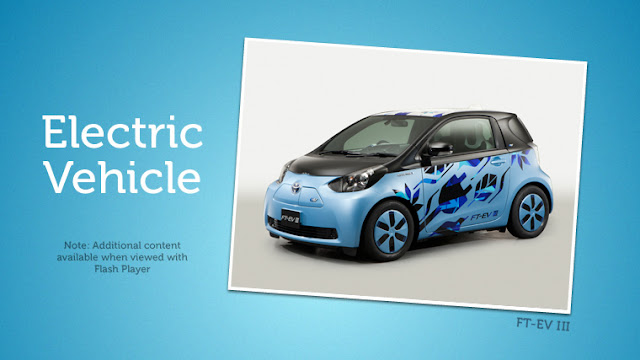Toyota has been developing electric vehicles since 1971, including a two-seater prototype (E-com) and two generations of the RAV4 EV. A latter model, developed in cooperation with Tesla, will go on sale in the U.S. in 2012.
Meanwhile, the latest EV prototype from Toyota has front wheel drive with an electric motor of 47 kW synchronous permanent magnet driven by a capacity of 11 kW / h and a lithium ion battery of 270 V located under the seats. Clever use of a new flat battery design allows space for passengers and cargo is not affected.
One of the great advantages of hybrids is that leverage 30% of the energy generated, whereas a conventional gasoline vehicle uses only 10%. This improved efficiency is achieved by the batteries that store energy in conventional propulsion systems is lost, as the kinetic energy, which escapes in the form of heat during braking. Many hybrid systems can pick up and reuse converting this energy into electrical energy through the so-called regenerative braking . The hybrid engine with diesel or gasoline is an important option to consider when buying a car. Efficiency is more lasting, are cleaner or at least less dirty.
~~~
~~~
The storage batteries
Electrical energy is a resource that is not exhausted. The electric motor, to replace the heat, is now considered a breakthrough for sustainable economy. The contamination, which is very low compared with the energy storage capacity as fuel, while the published calculations do not consider the energy use of low energy combustion finite resource, compared with an electric motor. Yet this is a major technological barrier to an electric motor.
Electric motors have demonstrated ability to drive plenty of other types of machines, such as trains and factory robots, since they can connect seamlessly streamlines high power. However, energy storage capabilities in a moving vehicle require designers to use a complicated multidisciplinary energy chain, and hybrid to replace a simple and inexpensive energy chain classic tank-engine-wheels. Electricity as energy currency, facilitates the use of many different technologies, as the electric motor consumes power regardless of the source used to generate it.



No comments:
Post a Comment